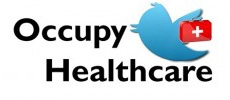Grand Junction, Colorado has important lessons to teach the country about healthcare. These lessons have very real and practical implications for any redesign of healthcare. In fact, some may say that many of the answers to the unanswerable question of how to control healthcare cost is in part found in Mesa County, Colorado. Before we get into why Grand Junction is so important in healthcare, let me share with you a bit of background from Wikipedia:
“The City of Grand Junction is the largest city in western Colorado. It is a city with a council–manager government form that is the county seat and the most populous city of Mesa County, Colorado, United States.Grand Junction is situated 247 miles (398 km) west-southwest of the Colorado State Capitol in Denver. As of the 2010 census, the population of the city was 58,566. Grand Junction is the 15th most populous city in the State of Colorado and the most populous city on the Colorado Western Slope. Grand Junction serves as a major commercial and transportation hub within the large area between the Green River and the Continental Divide. It is the principal city of the Grand Junction Metropolitan Statistical Area which had a population of 146,723 in 2010 census.”
To really know why Grand Junction matters, you have to look under the hood and examine the engine.
“Unlike in most communities, where doctors are paid less for Medicaid patients than insured ones, physicians here agreed among themselves to charge a little less for regular patients and a little more for Medicaid patients. That way doctors would be happy to treat all comers.’”In effect, we created a community health system,’ said Steve ErkenBrack, president of Rocky Mountain Health Plan.”

Recently, the New American Foundation completed a comprehensive report on Grand Junction. An excerpt:
“Some of what Grand Junction does right can be replicated — i.e. having a state-of-the-art health information technology system that many providers can access from a variety of settings to get a full picture of a patient’s condition, medications, test results, and health history. Some may be a bit harder, such as forward-looking leaders in health care that have a strong sense of purpose and community, and who figured out how to align incentives and business practices so that what’s good for the key players in health care was also good for the community as a whole — including the sick and the uninsured.”
Highlights from the report include:
- Quality over quantity
- A safety net that not only catches but embraces the needy
- Transparent performance data, peer-to-peer feedback, and information sharing that encourages doctors to collaborate and communicate
- A strong primary care physician workforce that coordinates treatment
- Innovative community service organizations that play a key supporting role in filling the community’s health care needs from birth to death
Drs. Tom Bodenheimer and David West also took a long look at Grand Junction and concluded the following:
“We believe that seven interrelated features of the health care system that may explain the relatively low health care costs could be adopted elsewhere. These are leadership by the primary care community; a payment system involving risk sharing by physicians; equalization of physician payment for the care of Medicare, Medicaid, and privately insured patients; regionalization of services into an orderly system of primary, secondary, and tertiary care; limits on the supply of expensive resources, including specialists, beds, and equipment; payment of primary care physicians for hospital visits; and robust end-of-life care. These features could be replicated in other markets — though generally not without political battles.”
Now back to the nonprofit part. From the LA Times:
“Grand Junction is a beneficiary of its location and history. Sitting on the vast red-rock Colorado Plateau, 245 miles west of Denver and 285 miles southeast of Salt Lake City, the town learned long ago to be self-sufficient. So in 1974, when its doctors were struggling to get reimbursed by Medicaid, they decided to take matters into their own hands.
The doctors formed a nonprofit HMO, called Rocky Mountain Health Plans. They grouped together in a physicians association and contracted with the HMO.
Crucially, in the 1980s, when most HMOs became for-profit, RMHP kept its nonprofit status.
‘We feel like we have support from our health insurance company,” said Dr. Michael Pramenko. When the company makes decisions on what can be covered, “we know they’re making decisions for the community, rather than shareholders who live 2,000 miles away.’
Because of RMHP’s vast market share — about 40% of residents here and in surrounding Mesa County — it has been able to embark on aggressively proactive initiatives.”
When the news is filled with cuts coming to Medicare because Congress could not pass payroll tax legislation, it is refreshing to see someone like Rocky Mountain Health Plan lead healthcare innovation in their community. They appear to be in the insurance game for the right reason and the city of Grand Junction, Colorado is benefiting.
So if you are not familiar with Grand Junction, maybe now you are a little bit more familiar. There is a great deal of information out there on what Grand Junction and Rocky Mountain Health Plan have done. Can it be replicated elsewhere? No doubt there are pieces of their model that have the ability to be generalized; however, it appears that one of the primary reasons this all works in Grand Junction is a healthcare community that has been willing to compromise and a health plan that puts the community before profit.
